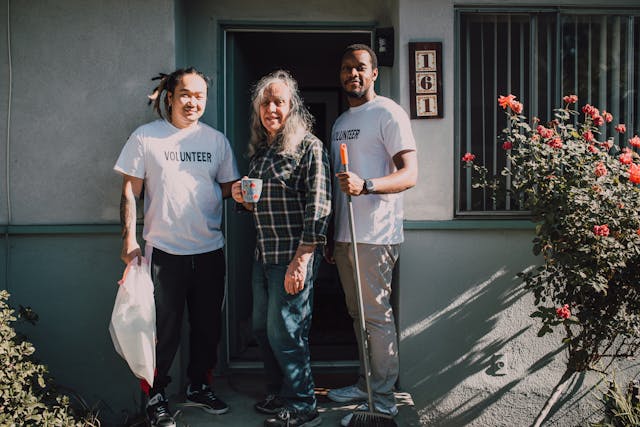Handling HMO (House in Multiple Occupation) properties is no ordinary task. It’s a distinct breed of property management requiring laser-focused strategies, sharp problem-solving skills, and a deep understanding of tenant dynamics. But the payoff? Huge, if done right. Let’s break down what it takes to excel in this niche of property management.
Understanding the Basics of HMOs
An HMO is a property rented out to three or more individuals who aren’t part of the same household but share facilities like bathrooms or kitchens. These properties are popular in urban areas where rental demand is high, and space is at a premium. Think students, young professionals, or even contractors working away from home.

The rental model differs from single lets. Each room is typically rented individually, often inclusive of utilities. This means higher rental yields but also a more intensive management workload.
The Legal and Licensing Maz
Regulations for HMOs are strict. Local councils often have specific licensing requirements, and these aren’t just hoops to jump through—they dictate the minimum standards for safety and living conditions.
Managers must navigate fire safety regulations, including installing fire doors, smoke alarms, and emergency lighting. Room sizes, maximum occupancy, and waste disposal rules are also tightly controlled. Ignorance here is not bliss—it’s costly.
In some cases, managing an HMO means dealing with additional council inspections. These visits scrutinize whether the property meets housing standards. A savvy property manager keeps documentation and maintenance logs watertight.
The Tenant Mix Is Everything
Finding the right mix of tenants can make or break an HMO. Compatibility matters when multiple individuals share living spaces. A student who parties till 2 a.m. probably won’t mesh with a quiet professional needing rest before a 6 a.m. shift.
Conducting thorough tenant screenings isn’t optional. Background checks, references, and even gut instincts come into play here. A disruptive tenant can cause headaches for the entire house, and sorting out disputes takes time, energy, and often, money.
Maintenance Is Your Lifeline
Wear and tear happen faster in HMOs. With multiple tenants using communal areas, appliances and fixtures are under constant pressure. Staying proactive with repairs and regular maintenance schedules is non-negotiable.
Here’s the catch: tenants expect swift resolutions. A broken washing machine can lead to frustrated calls from four or five tenants instead of one. Reliable contractors and a solid plan for emergency repairs can save you from sleepless nights.
Managers often include cleaning services for communal areas in the rent. It’s not just about keeping the place tidy—cleaning services also reduce the risk of disputes over whose turn it was to mop the floor.
Managing Rent and Utilities
Collecting rent from individual tenants can be complex. Many managers use all-inclusive rent models to streamline this process. This means setting rents that cover utilities like gas, electricity, water, and broadband, plus a buffer for rising costs.
Utility bills in HMOs can skyrocket if tenants aren’t careful. Some managers introduce fair usage policies to curb excessive energy consumption. Others install smart meters or include heating timers to maintain control.
Missed payments are another challenge. Clear communication and strict policies for rent arrears go a long way in keeping cash flow steady.
The Power of Tech in HMO Management
Technology simplifies HMO management. Property management software can handle rent collection, track maintenance requests, and even automate reminders for safety inspections.
For tenant communication, apps are invaluable. Group chats or dedicated platforms ensure quick updates about house issues, reducing the “he said, she said” drama that often plagues shared living spaces.
Smart home technology is also gaining traction. From app-controlled heating systems to keyless entry, tech can make an HMO more attractive to tenants while giving you greater control.
Marketing HMOs Effectively
These properties require unique marketing approaches. Highlight what sets them apart: flexible lease terms, convenient locations, and amenities like high-speed internet or modern furnishings.
Professional photography and detailed listings are vital. Focus on communal spaces as much as individual rooms. Prospective tenants want to know they’ll feel comfortable in the shared areas, not just their bedroom.
Partnering with local universities or businesses can also generate a steady tenant pipeline, especially in areas with a high demand for shared accommodations.
Common Pitfalls and How to Avoid Them
Unrealistic expectations about rental income lead to problems. While HMOs often generate higher yields, these come with increased costs for maintenance, compliance, and tenant turnover. Accurate budgeting ensures the property remains profitable.

Ignoring disputes among tenants is another trap. Issues left unresolved escalate quickly, leading to complaints, unhappy tenants, and even early move-outs. Regular check-ins and being available to mediate can prevent small disagreements from snowballing.
Why HMO Management Is Worth It
Despite the challenges, HMO management is a highly rewarding venture. The financial returns often outweigh the extra effort required, and the skills developed in this field are second to none.
Property managers who master the art of HMOs become indispensable to landlords. With the right systems in place, managing these properties becomes not just manageable but a standout skill in a competitive industry.
